Related products
Goldstein Lacrimal Sac Retractor
4.0 mm sharp prongs, 16.0 mm spreadGoldstein Lacrimal Sac Retractor is a commonly used tool in occuloplastic procedures. The retractor is used to expose the lacrimal sac during obstruction or infection. The sharp teeth are designed to reach the periosteum and give deeper exposure. In addition, a locking screw mechanism allows the spread to be held in place.
Guyton-Park Speculum
horizontal suture posts, blade spread 38.0 mm, 14.0 mm wide blades, 3-3/8" (8.5 cm)Guyton-Park Speculum is a commonly used ophthalmologic tool when visualization of the entire globe is desired. Both end pieces of the blade can be fit into the upper and lower lid, achieving a spread of 28.0 mm. The speculum is self-retaining, designed to hold in place once a desired spread has been reached. Both solid and fenestrated blades are available depending on physician preference.
Knapp Eye Speculum
blades 14.0 mm wide, spread 60.0 mm, 3-3/8" (8.5 cm) Knapp Eye Speculum is a frequently used tool in visualizing the globe during ophthalmologic procedures. The open wire design minimizes tissue damage while still providing adequate retraction. The speculum is designed to accommodate up to a 60.0 mm spread with a locking screw to hold in place.
Lancaster Speculum
blades 15.0 mm, spread 35.0 mm, 3-1/8" (8.0 cm) Lancaster Speculum is a commonly used tool for visualizing the ophthalmologic surgical field. The solid blades are designed for more controlled retraction of the lids and minimize the chance of tissue obstruction. In addition, an adjustment screw is provided to increase control during the procedure.
Maumenee-Park Speculum
blade spread 43.0 mm, 14.0 mm wide blades, 3-1/8" (7.9 cm) Maumenee-Park Speculum is a commonly used ophthalmologic tool when visualization of the entire globe is desired. Both end pieces of the blade can be fit into the upper and lower lid, achieving a spread of 43.0 mm. The speculum is self-retaining, designed to hold in place once a desired spread has been reached. Solid blades in the speculum ensure no tissue slippage into the surgical field. Both solid and fenestrated blades are available depending on physician preference.
Pierse Eye Speculum
blades 11.0 mm wide, spread 20.0 mm Pierse Eye speculum is a commonly used tool when visualization of the globe is desired during routine ophthalmologic examination. The lightweight design allows for quick palpebral opening and inspecting of the anterior ocular surface. The speculum is equipped with 11.0 mm wide blades and a 20.0 mm spread.
Temporal Wire Speculum
14.0 mm wide w/ spread of 43.0 mm Temporal Wire Speculum is a commonly used ophthalmologic tool when visualization of the entire globe is desired. Both end pieces of the blade can be fit into the upper and lower lid respectively to achieve a needed spread. The wire design ensures minimal tissue damage while still maintaining a firm grasp of the lid without slippage. Three different blade styles are available depending on surgical need.
Williams Speculum
Williams Speculum is a commonly used tool for visualizing the ophthalmologic surgical field. The open blades are designed to prevent tissue damage to the lid during retraction. In addition, an adjustment screw is provided to increase control during the procedure. Both adult and pediatric sizes are available.

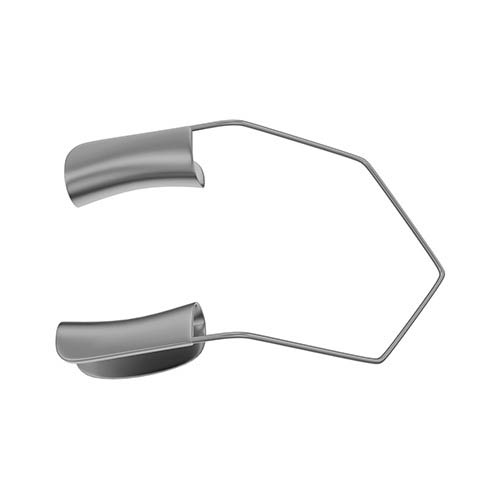
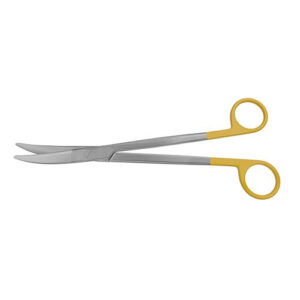
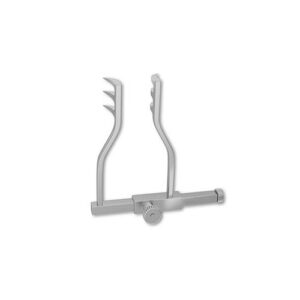
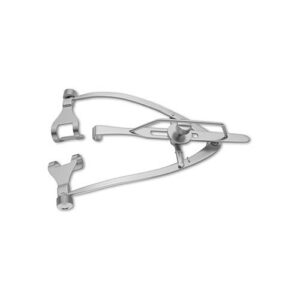
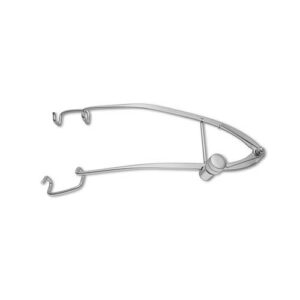
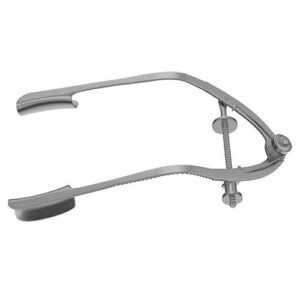
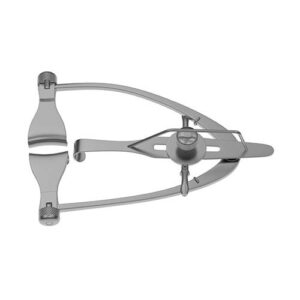
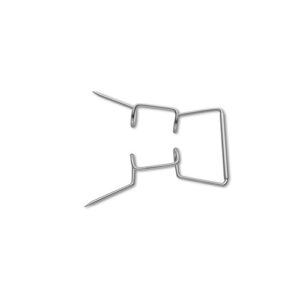
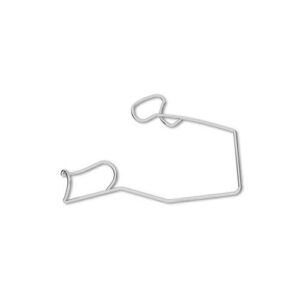
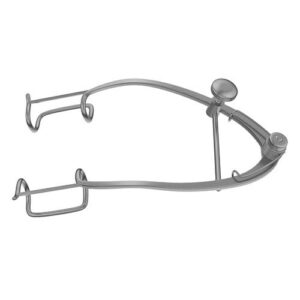

Reviews
There are no reviews yet.